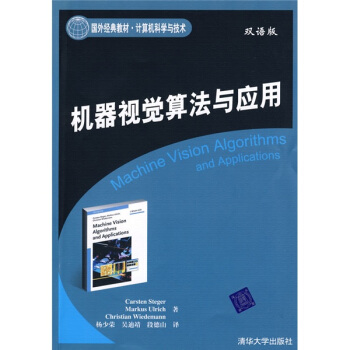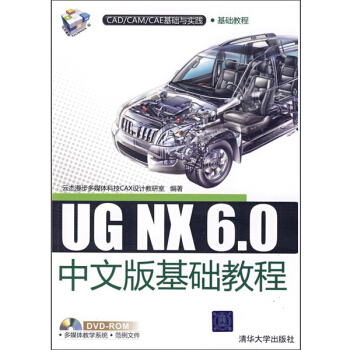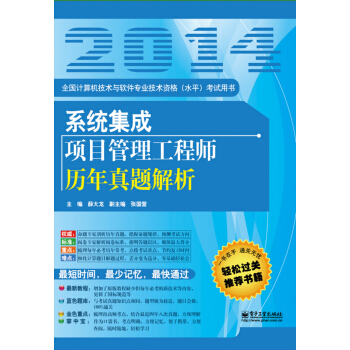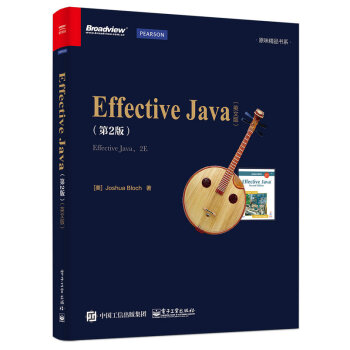![编译原理(英文版·第2版) [Compilers:Principles,Techniques,and Tools,Second Edition]](https://pic.windowsfront.com/10490900/a4db6b37-31f4-4c7e-88b5-d27ef1aee6a8.jpg)

具体描述
编辑推荐
内容简介
《编译原理》是编译领域无可替代的经典著作,被广大计算机专业人士誉为“龙书”。《编译原理》上一版自1986年出版以来,被世界各地的著名高等院校和研究机构(包括美国哥伦比亚大学、斯坦福大学、哈佛大学、普林斯顿大学、贝尔实验室)作为本科生和研究生的编译原理课程的教材。该书对我国高等计算机教育领域也产生了重大影响。第2版对每一章都进行了全面的修订,以反映自上一版出版二十多年来软件工程、程序设计语言和计算机体系结构方面的发展对编译技术的影响。
《编译原理》全面介绍了编译器的设计。并强调编译技术在软件设计和开发中的广泛应用,每章中都包含大量的习题和丰富的参考文献。《编译原理》适合作为高等院校计算机专业本科生和研究生的编译原理与技术课程的教材,也可供广大计算机技术人员参考。
作者简介
AlfredV.Aho,美国哥伦比亚大学教授。美国国家工程院院士,ACM和lEEE会士,曾获得IEEE的冯·诺伊曼奖。著有多部算法、数据结构、编译器、数据库系统及计算机科学基础方面的著作。MonicaS.Lam,斯坦福大学计算机科学系教授。曾任T'ensilica的首席科学家,也是Moka5的首任CEO。曾经主持SLJIF项目。
Ravi Sethi,Avaya实验室总裁。曾任贝尔实验室高级副总裁和LLicentTectlIlologies通信软件的CTO。他曾在宾夕法尼亚州立大学、亚利桑那州立大学和普林斯顿大学任教,是ACM会士。
Jeffrey D.UIIman,斯坦福大学计算机科学系教授和GradianceCEO。他的研究兴趣包括数据库理论、数据库集成、数据挖掘和利用信息基础设施教学等。他是美国国家工程院院士、IEEE会士,获得过ACM的Karlstrom杰出教育奖和Knufh奖。
目录
1 introduction1.1 language processors
1.2 the structure of a compiler
1.3 the evolution of programming languages
1.4 the science of building a compiler
1.5 applications of compiler technology
1.6 programming language basics
1.7 summary of chapter 1
1.8 references for chapter 1
2 a simple syntax-directed translator
2.1 introduction
2.2 syntax definition
2.3 syntax-directed translation
2.4 parsing
2.5 a translator for simple expressions
2.6 lexical analysis
2.7 symbol tables
2.8 intermediate code generation
2.9 summary of chapter 2
3 lexical analysis
3.1 the role of the lexical analyzer
3.2 input buffering
3.3 specification of tokens
3.4 recognition of tokens
3.5 the lexical-analyzer generator lex
3.6 finite automata
3.7 from regular expressions to automata
3.8 design of a lexical-analyzer generator
3.9 optimization of dfa-based pattern matchers
3.10 summary of chapter 3
3.11 references for chapter 3
4 syntax analysis
4.1 introduction
4.2 context-free grammars
4.3 writing a grammar
4.4 top-down parsing
4.5 bottom-up parsing
4.6 introduction to lr parsing: simple lr
4.7 more powerful lr parsers
4.8 using ambiguous grammars
4.9 parser generators
4.10 summary of chapter 4
4.11 references for chapter 4
5 syntax-directed translation
5.1 syntax-directed definitions
5.2 evaluation orders for sdd's
5.3 applications of syntax-directed translation
5.4 syntax-directed translation schemes
5.5 hnplementing l-attributed sdd's
5.6 summary of chapter 5
5.7 references for chapter 5
6 intermediate-code generation
6.1 variants of syntax trees
6.2 three-address code
6.3 types and declarations
6.4 translation of expressions
6.5 type checking
6.6 control flow
6.7 backpatching
6.8 switch-statements
6.9 intermediate code for procedures
6.10 summary of chapter 6
6.11 references for chapter 6
7 run-time environments
7.1 storage organization
7.2 stack allocation of space
7.3 access to nonlocal data on the stack
7.4 heap management
7.5 introduction to garbage collection
7.6 introduction to trace-based collection
7.7 short-pause garbage collection
7.8 advanced topics in garbage collection
7.9 summary of chapter 7
7.10 references for chapter 7
8 code generation
8.1 issues m the design of a code generator
8.2 the target language
8.3 addresses in the target code
8.4 basic blocks and flow graphs
8.5 optimization of basic blocks
8.6 a simple code generator
8.7 peephole optimization
8.8 register allocation and assignment
8.9 instruction selection by tree rewriting
8.10 optimal code generation for expressions
8.11 dynamic programming code-generation
8.12 summary of chapter 8
8.13 references for chapter 8
9 machine-independent optimizations
9.1 the principal sources of optimization
9.2 introduction to data-flow analysis
9.3 foundations of data-flow analysis
9.4 constant propagation
9.5 partial-redundancy elimination
9.6 loops in flow graphs
9.7 region-based analysis
9.8 symbolic analysis
9.9 summary of chapter 9
9.10 references for chapter 9
10 instruction-level parallelism
10.1 processor architectures
10.2 code-scheduling constraints
10.3 basic-block scheduling
10.4 global code scheduling
10.5 software pipelining
10.6 summary of chapter 10
10.7 references for chapter 10
11 optimizing for parallelism and locality
11.1 basic concepts
11.2 matrix multiply: an in-depth example
11.3 iteration spaces
11.4 aftlne array indexes
11.5 data reuse
11.6 array data-dependence analysis
11.7 finding synchronization-free parallelism
11.8 synchronization between parallel loops
11.9 pipelining
11.10 locality optimizations
11.11 other uses of affine transforms
11.12 summarv of chapter 11
11.13 references for chapter 11
12 interprocedural analysis
12.1 basic concepts
12.2 why interprocedural analysis?
12.3 a logical representation of data flow
12.4 a simple pointer-analysis algorithm
12.5 context-insensitive interprocedural analysis
12.6 context-sensitive pointer analysis
12.7 datalog implementation by bdd's
12.8 summary of chapter 12
12.9 references for chapter 12
a a complete front end
a.1 the source language
a.2 main
a.3 lexical analyzer
a.4 symbol tables and types
a.5 intermediate code for expressions
a.6 jumping code for boolean expressions
a.7 intermediate code for statements
a.8 parser
a.9 creating the front end
b finding linearly independent solutions
index
精彩书摘
Languagel, are used to search databases. Database queries consist of predicatescontaining relational and boolean operators. They can be interpreted or com-piled into commands to search a database for records satisfying that predicate.Compiled SimulationSimulation is a general technique used in many scientific and engineering disci-plines to understand a phenomenon or to validate a design. Inputs to a simula-tor usually include the description of the design and specific input parametersfor that particular simulation run. Simulations can be very expensive. We typi-cally need to simulate many possible design alternatives on many different inputsets, and each experiment may take days to complete on a high-performancemachine. Instead of writing a simulator that interprets the design, it is fasterto compile the design to produce machine code that simulates that particulardesign natively. Compiled simulation can run orders of magnitude faster thanan interpreter-based approach. Compiled simulation is used in many state-of-the-art tools that simulate designs written in Verilog or VHDL.1.5.5 Software Productivity ToolsPrograms are arguably the most complicated engineering artifacts ever pro-duced; they consist of many many details, every one of which must be correctbefore the program will work completely. As a result, errors are rampant inprograms; errors may crash a system, produce wrong results, render a systemvulnerable to security attacks, or even lead to catastrophic failures in criticalsystems. Testing is the primary technique for locating errors in programs.An interesting and promising complementary approach is to use data-flowanalysis to locate errors statically (that is, before the program is run). Data-flow analysis can find errors along all the possible execution paths, and notjust those exercised by the input data sets, as in the case of program testing.Many of the data-flow-analysis techniques, originally developed for compileroptimizations, can be used to create tools that assist programmers in theirsoftware engineering tasks.
The problem of finding all program'errors is undecidable. A data-flow anal-ysis may be designed to warn the programmers of all possible statements witha particular category of errors. But if most of these warnings are false alarms,users will not use the tool. Thus, practical error detectors are often neithersound nor complete. That is, they may not find all the errors in the program,and not all errors reported are guaranteed to be real errors. Nonetheless, var-ious static analyses have been developed and shown to be effective in findingerrors, such as dereferencing null or freed pointers, in real programs. The factthat error detectors may be unsound makes them significantly different fromcompiler optimizations. Optimizers must be conservative and cannot alter thesemantics of the program under any circumstances.
……
前言/序言
In the time since the 1986 edition of this book, the world of compiler designhas changed significantly. Programming languages have evolved to present newcompilation problems. Computer architectures offer a variety of resources ofwhich the compiler designer must take advantage. Perhaps most interestingly,the venerable technology of code optimization has found use outside compilers.It is now used in tools that find bugs in software, and most importantly, findsecurity holes in existing code. And much of the "front-end" technology ——grammars, regular expressions, parsers, and syntax-directed translators —— arestill in wide use.Thus, our philosophy from previous versions of the book has not changed.We recognize that few readers will build, or even maintain, a compiler for amajor programming language. Yet the models, theory, and algorithms associ-ated with a compiler can be applied to a wide range of problems in softwaredesign and software development. We therefore emphasize problems that aremost commonly encountered in designing a language processor, regardless ofthe source language or target machine.Use of the BookIt takes at least two quarters or even two semesters to cover all or most of thematerial in this book. It is common to cover the first half in an undergraduatecourse and the second half of the book —— stressing code optimization —— ina second course at the graduate or mezzanine level. Here is an outline of thechapters:Chapter 1 contains motivational material and also presents some backgroundissues in computer architecture and programming-language principles.Chapter 2 develops a miniature compiler and introduces many of the impor-taut concepts, which are then developed in later chapters. The compiler itselfappears in the appendix.Chapter 3 covers lexical analysis, regular expressions, finite-state machines, andscanner-generator tools. This material is fundamental to text-processing of allsorts.
alt="" />
用户评价
我对这本书的兴趣,源于我对编程语言底层机制的强烈好奇心。我总是思考,我们写下的那些高层代码,究竟是如何一步步被计算机理解并执行的。而《编译原理》(英文版·第2版)[Compilers:Principles,Techniques,and Tools,Second Edition] 这个书名,直接点明了核心内容,让我觉得它就是解答我疑问的最佳选择。我期望它不仅仅是枯燥的理论阐述,而是能够通过清晰的逻辑和生动的例子,让我领略到编译过程中那些精妙的设计和严谨的算法。我尤其想了解,编译器是如何处理不同编程语言的语法和语义差异的,以及在这个过程中会用到哪些关键的技术。这本书所包含的“Principles”、“Techniques”、“Tools”这些关键词,让我对它充满了信心。我坚信,通过阅读这本书,我将能够建立起一个扎实的编译原理知识体系,并且能够将这些知识迁移到对其他类似技术的理解上,从而更深入地理解计算机科学的本质。
评分说实话,我选择这本书,很大程度上是受到了它在学术界和业界广泛赞誉的影响。身边不少资深的开发者和计算机科学专业的老师都提到过这本书,并且无一例外地将其称为“必读”。这让我对它的内容充满了期待。我设想它会以一种非常严谨且富有逻辑的方式来组织内容,从最基础的概念讲起,逐步深入到更复杂的算法和数据结构。我希望它能提供清晰的图示和例证,帮助我理解那些抽象的编译过程。尤其吸引我的是,这本书并非一本纯粹的理论书籍,它还包含了“Techniques”和“Tools”这两个方面,这预示着它在理论讲解的同时,还会提供实用的技术和相关的工具介绍。我非常好奇它会介绍哪些具体的工具,以及如何利用这些工具来辅助编译器的开发。这种理论与实践相结合的讲解方式,是我在学习技术书籍时最看重的。我希望这本书能够帮助我建立起一个全面而扎实的编译原理知识体系,并且能够将这些知识应用到实际的项目开发中去,提升我的编程能力和解决问题的能力。
评分这本书,在我翻开它之前,就已经是计算机科学领域里一听名字就让人肃然起敬的经典之作了。我一直对语言的底层运作机制有着浓厚的兴趣,尤其是程序是如何被机器理解的这一过程。一直以来,我都在寻找一本能够系统性地、深入浅出地讲解编译原理的著作,而《编译原理》(英文版·第2版)[Compilers:Principles,Techniques,and Tools,Second Edition] 似乎就是我苦苦追寻的那个答案。从书名本身就可以感受到它所蕴含的深度和广度,"Principles"、"Techniques"、"Tools" 这几个词汇组合在一起,暗示着这本书不仅仅是理论的堆砌,更包含了实际的应用方法和实现工具。我预想中,它会像一位经验丰富的向导,带领我穿越抽象的语言规范,一步步揭示编译器是如何将人类可读的代码转化为机器可以执行的指令的。这种探索的渴望,促使我迫不及待地想要深入其中,去理解那些隐藏在代码之下的逻辑和智慧。我尤其期待它能详细阐述词法分析、语法分析、语义分析等核心环节,以及它们之间是如何协同工作的。
评分当我第一次看到这本书的封面时,脑海中就浮现出一个专业的、略显严肃的形象。这本书对我而言,代表着一种学术上的追求和对计算机科学核心技术的深度探索。我一直认为,理解编译原理是成为一名真正优秀的程序员的必经之路,它能让你从更高、更宏观的视角去看待编程语言的设计和实现。我期望这本书能够提供一种系统性的学习路径,让我能够循序渐进地掌握编译器的各个组成部分,并理解它们之间的相互关系。我特别希望能从书中了解到,不同类型的编程语言是如何通过编译器转化为机器码的,以及其中可能遇到的挑战和解决方案。虽然我还没有真正阅读这本书,但仅仅从书名和它的经典地位,我就已经感受到了它蕴含的知识的宝贵。我期待它能成为我学习道路上的一盏明灯,指引我深入理解计算机的底层运作机制,并且为我今后的学习和工作打下坚实的基础。
评分从书名《编译原理》(英文版·第2版)[Compilers:Principles,Techniques,and Tools,Second Edition] 就能感受到它是一部系统性的、具有里程碑意义的著作。我个人一直对“工具”和“技术”在计算机科学中的作用非常感兴趣,而编译原理正是连接高级语言和机器语言的关键“工具”和“技术”。我设想这本书会以一种非常详尽的方式,分解编译的整个过程,从词法分析器到代码生成器,层层递进。我特别期待它能深入讲解各种分析技术和优化策略,以及它们是如何被巧妙地应用于实际的编译器设计中的。我希望这本书能够帮助我理解,为什么某些编程语言在设计上会遵循特定的模式,以及这些模式对编译器实现有什么样的影响。这本书的出现,在我看来,是为我提供了一个深入了解计算机“大脑”工作的绝佳机会,让我能够从更根本的层面去理解软件的运行机制,并为我今后的技术发展提供更广阔的视野和更深厚的理论基础。
评分计算科学领域里的一本佳作。
评分龙书影印版,印刷质量和不错啦~
评分经典的龙书,内容自不必多说。对学习编译器的各个方面很有帮助。感觉这版的装帧要好于人邮的影音版本。
评分软件类专业必备,还能提高英语水平,不错
评分都是好书又便宜的好评。
评分很好很好!就是影印版的质量能再好一点,就更好了。京东的价格应该是最低了。
评分书多得看不过来了,好评
评分送货速度好快,很期待这本书内的内容
评分字有点小。。。其它还好
相关图书
本站所有内容均为互联网搜索引擎提供的公开搜索信息,本站不存储任何数据与内容,任何内容与数据均与本站无关,如有需要请联系相关搜索引擎包括但不限于百度,google,bing,sogou 等,本站所有链接都为正版商品购买链接。
© 2025 windowsfront.com All Rights Reserved. 静流书站 版权所有










![人工智能复杂问题求解的结构和策略(原书第6版) [Artificial Intelligence] pdf epub mobi 电子书 下载](https://pic.windowsfront.com/10059583/57202248N3a75424e.jpg)









